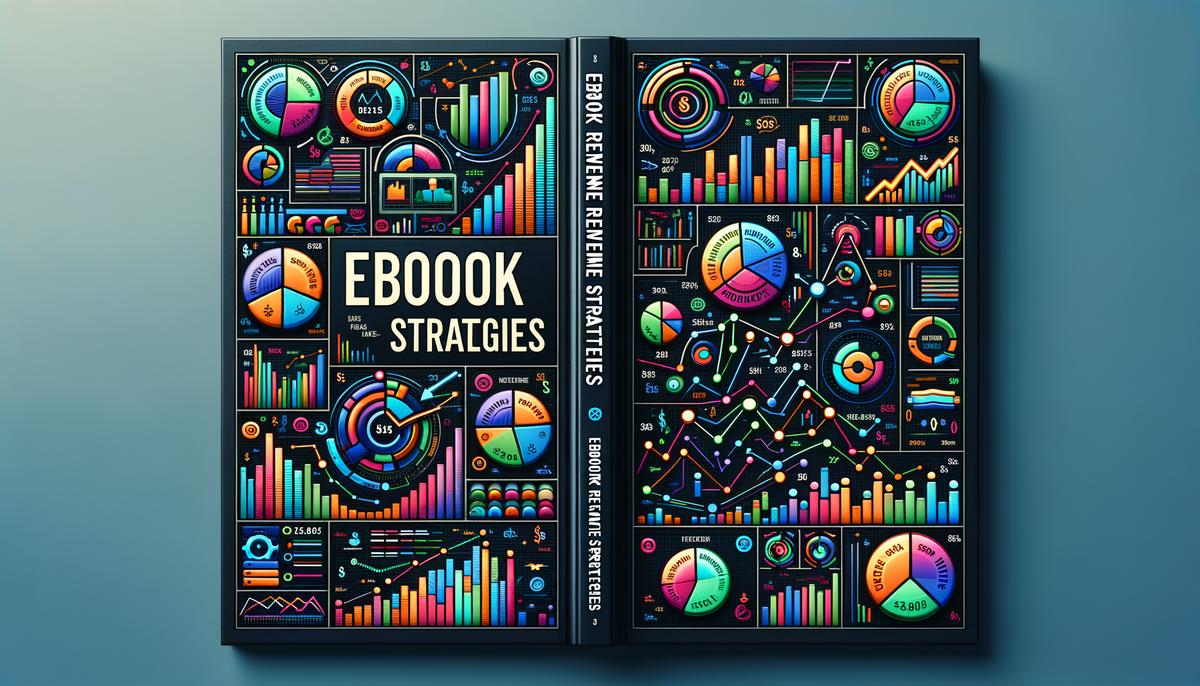Embarking on the adventure of writing an eBook can be a rewarding endeavor, inviting readers into your world of expertise and passion. The process, from ideation to publication, encompasses a myriad of steps tailored to resonate with your audience and stand out in the digital landscape. As we explore these steps, we’ll provide insights and strategies to refine your concept, engage your readers, and ultimately, achieve success in the competitive eBook market.
Choosing Your eBook Topic
Discovering Your Ideal eBook Topic: A Guide to Hitting the Sweet Spot
So, you’ve decided to write an eBook. That’s fantastic! An eBook can be a brilliant way to share your knowledge, establish credibility, and even earn some extra cash on the side. But here comes the big question: What should you write about? Choosing the perfect eBook topic isn’t as daunting as it seems. Follow these steps, and you’ll uncover a topic that not only excites you but also resonates with your potential readers. Let’s dive in!
Identify Your Passion and Expertise
Your journey to finding the ideal eBook topic starts with a bit of self-reflection. What are you passionate about? It could be anything from cooking to cryptocurrency. Next, consider where your expertise lies. Perhaps you’re a wizard at web design or have a knack for knitting. The intersection of your passion and expertise is the sweet spot for your eBook topic. Writing about what you love and know ensures that your enthusiasm shines through, making your eBook more engaging and authentic.
Research Your Audience
Understanding your target audience is key. Start by diving into online communities, such as forums or social media groups, related to your interests. Pay attention to the questions people ask and the problems they’re looking to solve. If you notice a recurring theme or a gap in available information, you’ve found a golden opportunity. Tailoring your eBook to address these needs not only adds value for your readers but also increases the likelihood of your eBook being a hit.
Analyze the Competition
Don’t skip on scoping out the competition. A quick search on platforms like Amazon can reveal what’s already out there. Are there dozens of eBooks on your potential topic? Don’t worry; it’s not a deal-breaker. Instead, look for ways to differentiate your eBook. Maybe you have a unique perspective, can offer more up-to-date information, or have a more engaging writing style. Pinpointing how you can stand out is crucial for carving your niche in a crowded market.
Test Your Idea
Before going all in, float your eBook idea in forums or on social media to gauge interest. You can even create a mini-version of your content, say, a blog post or an article, to see how it’s received. Feedback from potential readers can be invaluable, helping you refine your topic or approach before you commit to writing a whole eBook.
Ensure Scalability
Finally, think about the future. Choosing a topic that allows for follow-up eBooks or related products can turn your standalone eBook into a brand. Whether it’s the first in a series or opens the door to companion courses or merchandise, considering scalability from the outset can set you up for long-term success.
Choosing the right eBook topic is a blend of art and science, passion and practicality. By following these steps, you’re not just picking a topic; you’re laying the foundation for something that can grow with you. Remember, the best eBook topic is one that excites you to write and offers something valuable to your readers. With a bit of research and self-reflection, you’re well on your way to eBook success. Happy writing!

Creating an Effective Writing Plan
Creating an Outline That Commands Attention
Once you’ve laid the groundwork for your eBook by identifying your niche and understanding your audience, it’s time to dive into crafting a stellar outline. This isn’t just about jotting down a few bullet points. Your outline is the roadmap for your eBook, guiding readers through from introduction to conclusion. Think of it as plotting a journey where each chapter marks a critical pit stop, offering valuable insights or solutions. Begin with a compelling introduction that hooks your reader, then logically structure your chapters to build on one another, leading to a satisfying conclusion. Remember, clarity is key. Each chapter should have a clear purpose and contribute to the overall message of your eBook.
Writing Content That Engages and Informs
With your outline in hand, the real magic begins. Writing content that resonates isn’t just about sharing knowledge; it’s about telling a story. Even the most informative topics have a narrative – the problem your reader faces, the journey to solve that problem, and the solution or conclusion. Engage your readers with relatable anecdotes, simplify complex concepts with metaphors, and keep the tone conversational yet authoritative. Break up text with subheadings, lists, and quotes to make the content easily digestible. And don’t forget, the key to a reader’s heart is often through practical, actionable advice. Give them clear steps or tips they can apply immediately, making your eBook not just a read but a resource.
Incorporating Visuals for Enhanced Understanding
We live in a visually driven world where a picture can indeed speak a thousand words. Integrating visuals into your eBook can break up text monotony and help explain complex information more effectively. Whether it’s charts, infographics, or images, visuals serve as a powerful tool to enhance understanding and retention. Plus, they make your eBook more attractive and engaging. But remember to use visuals that add value and are directly relevant to the content. Quality is paramount, so ensure any graphic you include is high-resolution and professionally presented.
Editing and Proofreading: The Crucial Final Steps
After pouring your heart and soul into writing, it might be tempting to rush the finish line. However, editing and proofreading are crucial steps that can’t be overlooked. They’re the polish that makes your eBook shine. Start with self-editing, looking out for both structural issues and grammatical errors. Then, bring in a fresh pair of eyes. Whether it’s a professional editor or a grammar-savvy friend, external feedback can catch mistakes you’ve missed and offer suggestions to improve readability and flow. Remember, the goal is not just to catch typos but to ensure your eBook is clear, coherent, and compelling.
Choosing the Right Platform and Format
In today’s digital age, where an eBook lives can be just as important as its content. Selecting the right platform and format is crucial for reaching your target audience. Consider where your audience spends their time. Are they Kindle readers, or do they prefer downloadable PDFs from specific websites? Research the pros and cons of various eBook platforms, like Amazon Kindle, Apple Books, or directly selling PDF versions through your website. Additionally, ensure your eBook is compatible with different devices by selecting a responsive format that adapts to various screen sizes, offering a seamless reading experience across tablets, smartphones, and e-readers.
Launching With a Bang
The launch of your eBook isn’t just a release—it’s an event. Start building anticipation early with sneak peeks, cover reveals, and pre-order options. Use your social media channels, email list, and website to generate buzz. Consider offering early bird discounts or exclusive content to those who pre-order. On launch day, amp up your promotional efforts with social media blasts, email announcements, and perhaps even a virtual launch event. Remember, the goal is to make your eBook’s debut as memorable and impactful as possible, enticing readers to click “buy” right away.
By meticulously planning, passionately writing, and strategically launching your eBook, you’re not just sharing knowledge—you’re establishing yourself as an authority in your niche. Remember, an effective eBook writing and launching plan is a blend of creativity, strategy, and perseverance. Stick to it, and you’ll not only add value to your readers’ lives but also achieve the success your efforts deserve.

Designing and Formatting Your eBook
Now that you’ve got the nuts and bolts of your eBook creation process down, it’s crucial to dive deeper into the design and formatting elements. These are the finishing touches that can seriously amplify the impact of your eBook, making it not just a good read but a great one! Let’s dive into the essential tips and tricks to ensure your eBook looks as good as it reads.
Picking the Perfect Font and Size
The first thing to consider is the font and size. You want your eBook to be easy on the eyes, right? The secret sauce here is simplicity. Opt for a clean, professional font like Arial, Calibri, or Times New Roman. When in doubt, simplicity wins – it makes your eBook accessible to a wider audience. As for size, sticking to a 12-point font for the body text is a safe bet. It’s readable without straining the eyes, ensuring your readers stay engaged longer.
The Power of White Space
Don’t underestimate the power of white space in your eBook. It’s not wasted space; it’s a powerful tool for making your eBook more digestible. A cramped, text-heavy page can intimidate or tire your readers, but white space gives their eyes a breather. It makes your eBook look more organized and helps emphasize the points you want to stand out. So, embrace the gaps and let your content breathe!
Engaging Visuals That Speak
Incorporating images, infographics, charts, and even videos (if your format allows) can transform your eBook from a text-heavy document into an interactive experience. Visuals not only break the monotony of text but also help to illustrate concepts, making them easier to understand. A pro tip: make sure all visuals are high-quality and relevant. Each image should add value, not just decoration.
Navigating with Ease: Hyperlinks and Table of Contents
An interactive table of contents and hyperlinks within your eBook are not just fancy add-ons; they’re essentials for navigation. They allow readers to jump to sections that interest them most without scrolling through pages. It’s like giving your readers a map in a treasure hunt; they’ll thank you for it!
The Right Format Matters
Choosing the right format for your eBook is critical. The most common formats are PDF, ePub, and MOBI. PDFs are universal and can be viewed on any device, but they’re not always the best for small screens. ePub and MOBI, on the other hand, offer more flexibility. They adjust to fit the screen size of any device, making them ideal for readers who use smartphones or e-readers. Consider your audience and their reading preferences when making your choice.
Testing Across Devices
Before you hit publish, test your eBook on different devices – smartphones, tablets, e-readers, and computers. This step ensures your formatting looks good no matter how your readers choose to dive into your content. It’s about giving everyone the best possible experience, regardless of their device choice.
Conclusion: Wrapping It Up with Impact
Your eBook’s design and formatting play a massive role in its success. It’s not just about making it look good but also about enhancing readability, ensuring accessibility, and providing a seamless user experience. The right font and size, effective use of white space, engaging visuals, easy navigation, choosing the right format, and testing across devices are not just details; they’re what can turn your eBook from a simple read into an impactful experience. So, give these elements the attention they deserve, and watch your eBook make waves!

Publishing and Marketing Your eBook
Alright, let’s dive right into making your eBook a standout success, especially after you’ve ticked all the boxes from perfecting your content to launching it with excitement. But wait, there’s a lot more to ensure your eBook doesn’t just sit pretty on digital shelves but actually gets read and recommended. Strap in; we’re about to ramp up your eBook game!
Picking the Perfect Font and Size
First and foremost, the readability of your eBook is crucial. You might have the most compelling content, but if it’s a chore to read, well, that’s a no-go. Choosing the right font might seem like a tiny detail, but trust me, it’s a game-changer. Stick to classic, easy-on-the-eyes fonts like Arial, Times New Roman, or Georgia. As for the size, 12 points is generally the sweet spot. It’s large enough for comfortable reading without making your eBook feel like a picture book. Just right!
The Power of White Space
Ever opened a book and felt overwhelmed by the sheer wall of text staring back at you? That’s exactly what we want to avoid. White space is your friend. It’s not wasted space; it’s a breathing room for your readers’ eyes. Proper use of margins, spacing between lines and paragraphs, and sections can dramatically improve readability and make your eBook look more professional. Let’s keep those readers engaged, not intimidated!
Engaging Visuals That Speak
A picture is worth a thousand words—cliché but true, especially in eBooks. Including relevant images, infographics, or charts can break the monotony of text and provide visual explanations that words might fail to convey. Don’t go overboard, though. Keep it relevant and sparing. Every visual should serve a purpose, adding value to your content and aiding in the reader’s understanding.
Navigating with Ease: Hyperlinks and Table of Contents
Ever found yourself lost in a book, flipping back and forth, trying to recall where a specific section was? In the digital world, we have the magic of hyperlinks and a clickable table of contents—use them! A well-organized table of contents at the beginning of your eBook allows readers to jump to the sections that interest them most. And don’t forget to hyperlink references to other sections of your book or to external resources. It enhances the reading experience by making it interactive and more informative.
The Right Format Matters
Choosing the correct format for your eBook can seem like navigating a maze. PDF? ePub? Mobi? Consider where your target audience hangs out. If they’re Kindle users, Mobi might be your best bet. Want your eBook on multiple platforms like Apple Books, Nook, and Kobo? ePub is the way to go. And for those looking to ensure their eBook looks exactly the same on every device, PDFs have got you covered, though they’re less flexible on smaller screens.
Testing Across Devices
This step is crucial and often overlooked. Your eBook might look fantastic on your computer but a hot mess on a smartphone or e-reader. Testing how your eBook appears on different devices ensures you catch any formatting issues that could sour the reading experience. Remember, accessibility is key; you want your eBook to be enjoyable for everyone, regardless of how they choose to read it.
Conclusion: Wrapping It Up with Impact
Finally, ending your eBook on a high note is as important as starting it with a bang. A compelling conclusion that summarizes key takeaways, encourages further engagement, or leads to a call to action can leave a lasting impact. Consider directing readers to your website, offering them to sign up for your newsletter, or highlighting your next project. This isn’t just the end; it’s an invitation to stay connected and continue the journey you’ve begun together.
There you have it! Transforming your eBook from good to great involves not just what you say but how you present it. It’s about crafting an experience that’s enjoyable, memorable, and above all, reader-friendly. Making these smart tweaks to your eBook could very well be what sets you apart in the bustling digital landscape. Now go make that masterpiece of yours shine!

Monetizing Your eBook
Maximizing Your eBook Revenue: Pricing Strategies and Marketing Mastery
So, you’ve got an eBook that’s polished to perfection, packed with valuable insights, and ready to make waves in the digital world. But crafting a stellar eBook is only half the battle. The next big steps? Pricing it right and marketing it smartly to maximize your revenue. Let’s dive into these crucial strategies, ensuring that every bit of effort you’ve put into your eBook translates into sweet, sweet income.
Pricing It Perfectly: The Golden Middle Path
Finding the sweet spot for your eBook’s price is more art than science. Too high, and you might scare potential readers away. Too low, and you might undervalue your masterpiece, leaving money on the table. A competitive pricing strategy takes into account your eBook’s length, quality, and the standard in your niche. A smart move? Consider introductory pricing. Start with a lower price to attract initial buyers and reviews, then gradually increase it as you gain traction and testimonials, showing that your eBook is worth every penny.
Bundling Joy: More Is Merrier (And More Profitable)
Think beyond selling your eBook in isolation. Bundling it with other products or even other eBooks can drive up its perceived value and your earnings. Offering your eBook as part of a package deal, such as including a complimentary webinar, an exclusive podcast series, or additional PDF guides on related topics, makes your offer irresistible. This not only boosts sales but also cross-promotes your other content, providing a comprehensive experience around your expertise.
The Magic of Limited Time Offers: Creating Urgency
Humans have a natural fear of missing out, and you can leverage this to your advantage. Limited-time offers, such as a discounted price or a bonus content bundle for early buyers, create urgency and encourage fence-sitters to take the plunge. Highlight the time sensitivity in your marketing campaigns, using countdown timers and urgent language to drive the message home. This method excels at boosting initial sales momentum, which is critical for long-term success.
Leveraging Social Proof: Testimonials and Reviews
In the digital world, trust is currency, and social proof is how you bank it. Encourage early readers to leave honest reviews and testimonials. Feature these prominently on your sales page, in your marketing materials, and across social media platforms. Positive reviews from real users can significantly influence potential buyers who are on the fence, giving them that nudge they need to make a purchase.
Mastery of Social Media Marketing
Social media isn’t just for cat videos and memes; it’s a potent marketing tool. Tailor your approach to each platform, matching the content format and style to its audience. Create engaging posts that highlight key takeaways from your eBook, share behind-the-scenes of your writing process, or even snippets of your eBook content. Engage with your audience through comments, direct messages, and live sessions, making them feel part of your eBook journey. This not only builds anticipation but also fosters a loyal community around your brand.
Email Marketing: The Underestimated Hero
Never underestimate the power of a well-crafted email. Your email list is a goldmine of potential readers who’ve already shown interest in your content. Use it to build anticipation before your eBook launch with sneak peeks and exclusive content. After the launch, keep the momentum going with follow-up emails, offering additional insights, and gently reminding them of the value your eBook offers. Personalize your emails as much as possible; a personal touch can make all the difference.
Affiliate Marketing: Extending Your Reach
Why limit the marketing efforts to your own circles? With affiliate marketing, you can leverage the audiences of others in your niche. Partner with influencers and bloggers who resonate with your target audience, offering them a commission for every eBook sold through their referral. This win-win scenario extends your reach exponentially and adds credibility to your eBook through endorsements from trusted names in the industry.
Final Boost: Ad Campaigns with Precision Targeting
When done right, paid ad campaigns can significantly amplify your eBook’s visibility and sales. Platforms like Facebook, Instagram, and Google AdWords offer sophisticated targeting options to reach your ideal audience. Start with a small budget, A/B test your ads to see what resonates, and adjust your strategy based on real data. Captivating visuals, compelling copy, and a clear call-to-action are your best friends here.
In the world of eBooks, creating valuable content is just the beginning. By implementing strategic pricing, bundling, and a multi-faceted marketing approach, you can ensure that your eBook not only reaches its target audience but also maximizes your revenue potential. Dive into these strategies with enthusiasm, and watch as your eBook transforms from a mere digital file into a substantial source of income and impact.

Mastering the art of eBook creation and marketing is an ongoing process that demands creativity, patience, and strategic planning. By adhering to the comprehensive guidelines outlined, aspiring authors can navigate through the complexities of the eBook industry with confidence. Remember, the essence of a great eBook lies in its ability to connect with readers, offer unparalleled value, and leave an indelible mark on the literary world. Armed with these insights, you’re well-equipped to transform your vision into a compelling digital masterpiece that captivates and inspires.




